- Home
- Graham Hancock
Fingerprints of the Gods Page 17
Fingerprints of the Gods Read online
Page 17
Equally typical of the profligate squandering of the intellectual riches
concealed in the Mexican past was the shared fate of two gifts given to
Cortez by the Aztec emperor Montezuma. These were circular calendars,
as big as cartwheels, one of solid silver, and the other of solid gold. Both
were elaborately engraved with beautiful hieroglyphs which may have
contained material of great interest. Cortez had them melted down for
ingots on the spot.9
More systematically, all over Central America, vast repositories of
knowledge accumulated since ancient times were painstakingly gathered,
heaped up and burned by zealous friars. In July 1562, for example, in the
main square of Mani (just south of modern Merida in Yucatan Province)
Fr. Diego de Landa burned thousands of Maya codices, story paintings
and hieroglyphs inscribed on rolled-up deer skins. He also destroyed
countless ‘idols’ and ‘altars’, all of which he described as ‘works of the
devil, designed by the evil one to delude the Indians and to prevent them
from accepting Christianity ...’10 Elsewhere he elaborated on the same
theme:
We found great numbers of books [written in the characters of the Indians] but as
they contained nothing but superstitions and falsehoods of the devil we burned
them all, which the natives took most grievously, and which gave them great
pain.11
Not only the ‘natives’ should have felt this pain but anyone and
everyone—then and now—who would like to know the truth about the
past.
Many other ‘men of God’, some even more ruthlessly efficient than
7 The Magic and Mysteries of Mexico, pp. 228-9.
8 Ibid.
9 Mysteries of the Mexican Pyramids, p. 7.
10 Yucatan before and after the Conquest, p. 9. See also Mysteries of the Mexican
Pyramids, p. 20.
11 Yucatan before and after the Conquest, p. 104.
116
Graham Hancock – FINGERPRINTS OF THE GODS
Diego de Landa, participated in Spain’s satanic mission to wipe clear the
memory banks of Central America. Notable among these was Juan de
Zumarraga, Bishop of Mexico, who boasted of having destroyed 20,000
idols and 500 Indian temples. In November 1530 he burned a
Christianized Aztec aristocrat at the stake for having allegedly reverted to
worship of the ‘rain-god’ and later, in the market-place at Texcoco, built a
vast bonfire of astronomical documents, paintings, manuscripts and
hieroglyphic texts which the conquistadores had forcibly extracted from
the Aztecs during the previous eleven years.12 As this irreplaceable
storehouse of knowledge and history went up in flames, a chance to
shake off at least some of the collective amnesia that clouds our
understanding was lost to mankind for ever.
What remains to us of the written records of the ancient peoples of
Central America? The answer, thanks to the Spanish, is less than twenty
original codices and scrolls.13
We know from hearsay that many of the documents which the friars
reduced to ashes contained ‘records of ages past’.14
What did those lost records say? what secrets did they hold?
Gigantic men of deformed stature
Even while the orgy of book-burning was still going on, some Spaniards
began to realize that ‘a truly great civilization had once existed in Mexico
prior to the Aztecs’.15 Oddly enough, one of the first to act on this
realization was Diego de Landa. He appears to have undergone
‘Damascus-road experience’ after staging his auto-da-fé at Mani. In later
years, determined to save what he could of the ancient wisdom he had
once played such a large part in destroying, he became an assiduous
gatherer of the traditions and oral histories of the native peoples of the
Yucatan.16
Bernardino de Sahagun, a Franciscan friar, was a chronicler to whom we
owe much. A great linguist, he is reported to have ‘sought out the most
learned and often the oldest natives, and asked each to paint in his Aztec
picture writing as much as he could clearly remember of Aztec history,
religion and legend’.17 In this way Sahagun was able to accumulate
detailed information on the anthropology, mythology and social history
of ancient Mexico, which he later set down in a learned twelve-volume
work. This was suppressed by the Spanish authorities. Fortunately one
copy has survived, though it is incomplete.
12 Mysteries of the Mexican Pyramids, p. 21.
13 Fair Gods and Stone Faces, p. 34.
14 Ibid.
15 Mysteries of the Mexican Pyramids, p. 23.
16 Yucatan before and after the Conquest.
17 Mysteries of the Mexican Pyramids, p. 24.
117
Graham Hancock – FINGERPRINTS OF THE GODS
Diego de Duran, a conscientious and courageous collector of
indigenous traditions, was yet another Franciscan who fought to recover
the lost knowledge of the past. He visited Cholula in AD 1585, a time of
rapid and catastrophic change. There he interviewed a venerated elder of
the town, said to have been more than one hundred years old, who told
him this story about the making of the great ziggurat:
In the beginning, before the light of the sun had been created, this place, Cholula,
was in obscurity and darkness; all was a plain, without hill or elevation, encircled
in every part by water, without tree or created thing. Immediately after the light
and the sun arose in the east there appeared gigantic men of deformed stature
who possessed the land. Enamoured of the light and beauty of the sun they
determined to build a tower so high that its summit should reach the sky. Having
collected materials for the purpose they found a very adhesive clay and bitumen
with which they speedily commenced to build the tower ... And having reared it to
the greatest possible altitude, so that it reached the sky, the Lord of the Heavens,
enraged, said to the inhabitants of the sky, ‘Have you observed how they of the
earth have built a high and haughty tower to mount hither, being enamoured of
the light of the sun and his beauty? Come and confound them, because it is not
right that they of the earth, living in the flesh, should mingle with us.’ Immediately
the inhabitants of the sky sallied forth like flashes of lightning; they destroyed the
edifice and divided and scattered its builders to all parts of the earth.18
It was this story, almost but not quite the biblical account of the Tower of
Babel (which was itself a reworking of a far older Mesopotamian
tradition), that had brought me to Cholula.
The Central American and Middle Eastern tales were obviously closely
related. Indeed, the similarities were unmissable, but there were also
differences far too significant to be ignored. Of course, the similarities
could be due to unrecorded pre-Colombian contacts between the cultures
of the Middle East and the New World, but there was one way to explain
the similarities and the differences in a single theory. Suppose that the
two versions of the legend had evolved separately for several thousands
of years, but prior to that both had descended from the sa
me remotely
ancient ancestor?
Remnants
Here’s what the Book of Genesis says about the ‘tower that reached to
heaven’:
Throughout the earth men spoke the same language, with the same vocabulary.
Now as they moved eastwards they found a plain in the land of Shinar, where they
settled. There they said to one another, ‘Come, let us make bricks and bake them
in the fire.’ For stone they Used bricks and for mortar they used bitumen. ‘Come,’
they said, ‘let us build ourselves a town and a tower with its top reaching heaven.
Let us make a name for ourselves, so that we may not be scattered about the
18 Diego de Duran, ‘Historia antiqua de la Nueve Espana’, (1585), in Ignatius Donelly,
Atlantis: The Antediluvian World, p. 200.
118
Graham Hancock – FINGERPRINTS OF THE GODS
entire earth.’
Now Yahewh [the Hebrew God] came down to see the town and the tower that the
sons of man had built. ‘So they are all a single people with a single language!’ said
Yahweh. ‘This is but the start of their undertakings! There will be nothing too hard
for them to do. Come, let us go down and confuse their language on the spot so
that they can no longer understand one another.’
Yahweh scattered them thence over the whole face of the earth, and they stopped
building the tower. It was named Babel, therefore, because there Yahweh confused
the language of the whole earth. It was from there that Yahweh scattered them
over the whole face of the earth.19
The verse which most interested me suggested very clearly that the
ancient builders of the Tower of Babel had set out to create a lasting
monument to themselves so that their name would not be forgotten—
even if their civilization and language were. Was it possible that the same
considerations could have applied at Cholula?
Only a handful of monuments in Mexico were thought by archaeologists
to be more than 2000 years old. Cholula was definitely one of them.
Indeed no one could say for sure in what distant age its ramparts had
first begun to be heaped up. For thousands of years before development
and extension of the site began in earnest around 300 BC, it looked as
though some other, older structure might have been positioned at the
spot over which the great ziggurat of Quetzalcoatl now rose.
There was a precedent for this which further strengthened the
intriguing possibility that the remnants of a truly ancient civilization
might still be lying around in Central America waiting to be recognized.
For example, just south of the university campus of Mexico City, off the
main road connecting the capital to Cuernavaca, stands a circular step
pyramid of great complexity (with four galleries and a central staircase). It
was partially excavated in the 1920s from beneath a mantle of lava.
Geologists were called to the site to help date the lava, and carried out a
detailed examination. To everyone’s surprise, they concluded that the
volcanic eruption which had completely buried three sides of this pyramid
(and had then gone on to cover about sixty square miles of the
surrounding territory) must have taken place at least seven thousand
years ago.20
This geological evidence seems to have been ignored by historians and
archaeologists, who do not believe that any civilization capable of
building a pyramid could have existed in Mexico at such an early date. It
is worth noting, however, that Byron Cummings, the American
archaeologist who originally excavated the site for the National
Geographical Society, was convinced by clearly demarcated stratification
19 Genesis 11:1-9.
20 Reported in Maps of the Ancient Sea Kings, p. 199. See also The God-Kings and the
Titans, p. 54, and Mysteries of the Mexican Pyramids, p. 207.
119
Graham Hancock – FINGERPRINTS OF THE GODS
layers above and below the pyramid (laid down both before and after the
volcanic eruption) that it was ‘the oldest temple yet uncovered on the
American continent’. He went further than the geologists and stated
categorically that this temple ‘fell into ruins some 8500 years ago’.21
Pyramids upon pyramids
Going inside the Cholula pyramid really did feel like entering a man-made
mountain. The tunnels (and there were more than six miles of them) were
not old: they had been left behind by the teams of archaeologists who
had burrowed here diligently from 1931 until funds ran out in 1966.
Somehow, these narrow, low-ceilinged corridors had borrowed an
atmosphere of antiquity from the vast structure all around them. Moist
and cool, they offered an inviting and secretive darkness.
Following a ribbon of torchlight we walked deeper inside the pyramid.
The archaeological excavations had revealed that it was not the product
of one dynasty (as was thought to have been the case with the pyramids
at Giza in Egypt), but that it had been built up over a very long period of
time—two thousand years or so, at a conservative estimate. In other
words it was a collective project, created by an inter-generational labour
force drawn from the many different cultures, Olmec, Teotihuacan,
Toltec, Zapotec, Mixtec, Cholulan and Aztec, that had passed through
Cholula since the dawn of civilization in Mexico.22
Though it was not known who had been the first builders here, as far as
it had been possible to establish the earliest major edifice on the site
consisted of a tall conical pyramid, shaped like an upturned bucket,
flattened at the summit where a temple had stood. Much later a second,
similar structure was imposed on top of this primordial mound, i.e. a
second inverted bucket of clay, and compacted stone was placed directly
over the first, raising the temple platform to more than 200 feet above
the surrounding plain. Thereafter, during the next fifteen hundred years
or so, an estimated four or five other cultures contributed to the final
appearance of the monument. This they did by extending its base in
several stages, but never again by increasing its maximum height. In this
way, almost as though a master plan were being implemented, the manmade mountain of Cholula gradually attained its characteristic, four-tier
ziggurat shape. Today, its sides at the base are each almost 1500 feet
long—about twice the length of the sides of the Great Pyramid at Giza—
and its total volume has been estimated at a staggering three million
21 Byron S. Cummings, ‘ Cuicuilco and the Archaic Culture of Mexico’, University of
Arizona Bulletin, volume IV:8, 15 November 1933.
22 Mexico, p. 223. See also Kurt Mendelssohn, The Riddle of the Pyramids, Thames &
Hudson, London, 1986, p. 190.
120
Graham Hancock – FINGERPRINTS OF THE GODS
cubic metres.23 This makes it, as one authority succinctly states, ‘the
largest building ever erected on earth.’24
Why?
Why go to all that trouble?
What sort of name for themselves were the peoples of Central America
trying to make?
Walking through the network of corridors and passageways, inhaling
>
the cool, loamy air, I was uncomfortably conscious of the great weight
and mass of the pyramid pressing down upon me. It was the largest
building in the world and it had been placed here in honour of a Central
American deity of whom almost nothing was known.
We had the conquistadores and the Catholic Church to thank for leaving
us so deeply in the dark about the true story of Quetzalcoatl and his
followers. The smashing and desecration of his ancient temple at Cholula,
the destruction of idols, altars and calendars, and the great bonfires
made out of codices, paintings and hieroglyphic scrolls, had succeeded
almost completely in silencing the voices of the past. But the legends did
offer us one graphic and powerful piece of imagery: a memory of the
‘gigantic men of deformed stature’ who were said to have been the
original builders.
23 The Riddle of the Pyramids, p. 190.
24 Ibid.
121
Graham Hancock – FINGERPRINTS OF THE GODS
Chapter 16
Serpent Sanctuary
From Cholula we drove east, past the prosperous cities of Puebla, Orizaba
and Cordoba, towards Veracruz and the Gulf of Mexico. We crossed the
mist-enshrouded peaks of the Sierra Madre Oriental, where the air was
thin and cold, and then descended towards sea level on to tropical plains
overgrown with lush plantations of palms and bananas. We were heading
into the heartlands of Mexico’s oldest and most mysterious civilization:
that of the so-called Olmecs, whose name meant ‘rubber people’.
Dating back to the second millennium BC, the Olmecs had ceased to
exist fifteen hundred years before the rise of the Aztec empire. The
Aztecs, however, had preserved haunting traditions concerning them and
were even responsible for naming them after the rubber-producing area
of Mexico’s gulf coast where they were believed to have lived.1 This area
lies between modern Veracruz in the west and Ciudad del Carmen in the
east. In it the Aztecs found a number of ancient ritual objects produced
by the Olmecs and for reasons unknown they collected these objects and
placed them in positions of importance in their own temples.2
Looking at my map, I could see the blue line of the Coatzecoalcos River
running into the Gulf of Mexico more or less at the midpoint of the

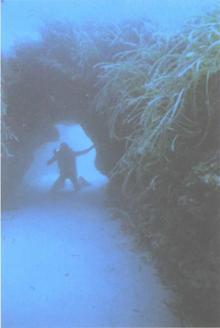 Underworld: The Mysterious Origins of Civilization
Underworld: The Mysterious Origins of Civilization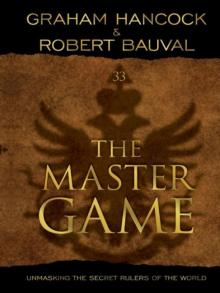 The Master Game: Unmasking the Secret Rulers of the World
The Master Game: Unmasking the Secret Rulers of the World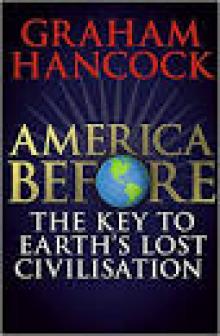 America Before
America Before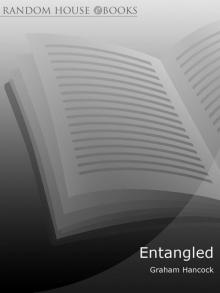 Entangled
Entangled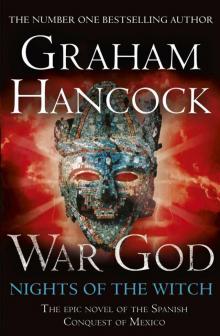 War God: Nights of the Witch
War God: Nights of the Witch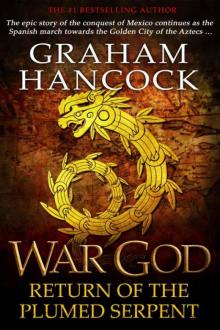 War God: Return of the Plumed Serpent
War God: Return of the Plumed Serpent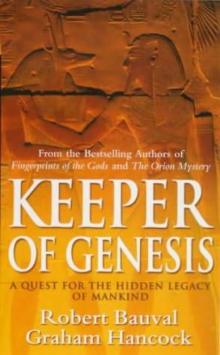 The Message of the Sphinx AKA Keeper of Genesis
The Message of the Sphinx AKA Keeper of Genesis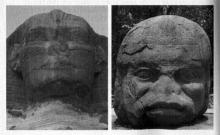 Fingerprints of the Gods
Fingerprints of the Gods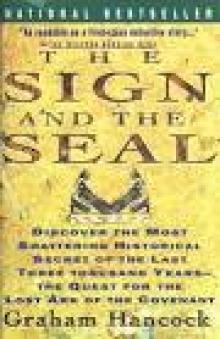 The Sign and the Seal
The Sign and the Seal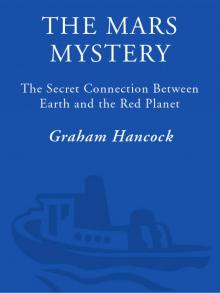 The Mars Mystery: The Secret Connection Between Earth and the Red Planet
The Mars Mystery: The Secret Connection Between Earth and the Red Planet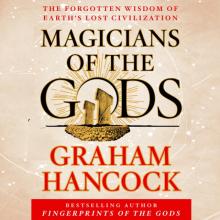 Magicians of the Gods: The Forgotten Wisdom of Earth's Lost Civilization
Magicians of the Gods: The Forgotten Wisdom of Earth's Lost Civilization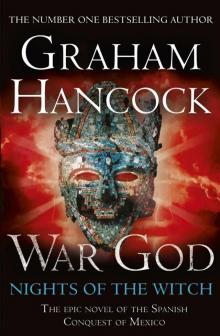 War God
War God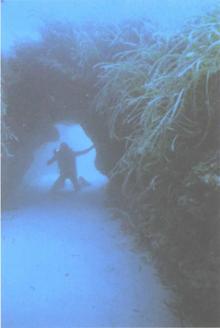 Underworld
Underworld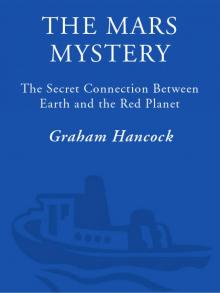 The Mars Mystery
The Mars Mystery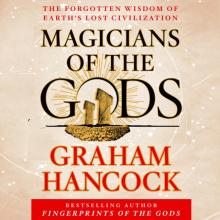 Magicians of the Gods
Magicians of the Gods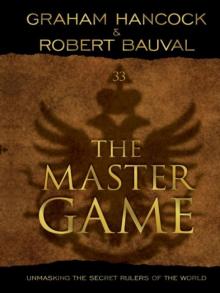 The Master Game
The Master Game